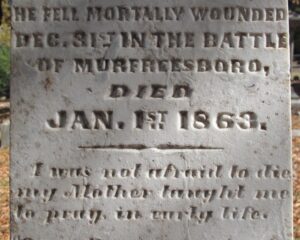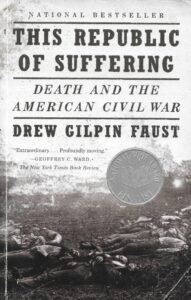 Recently, Roman Catholic Pope Francis referred to Saint Joseph as the “patron of a happy death.” Here’s the problem: I usually associate happiness with smiles, laughter, and a sense of the lightness of life. “Happy” and “death” are hard for me to connect.
Recently, Roman Catholic Pope Francis referred to Saint Joseph as the “patron of a happy death.” Here’s the problem: I usually associate happiness with smiles, laughter, and a sense of the lightness of life. “Happy” and “death” are hard for me to connect.
The Pope stood before a General Audience and introduced the phrase “happy death” in the first words he spoke about Joseph (you know, Joseph, the husband of Mary and earthly father of Jesus). He never again used the word “happy” in his brief remarks.
What is it about the word “happy”? Why is it so hard to associate it with death and dying?
I want to drop off a “happy”
Three years ago, we moved to the Deep South in the hill country of Oxford, Mississippi. Here we might get a call from a friend, “Y’all going to be home? I want to drop off a happy.” That means she’s going to bring over a gift. It might be fresh-made pimento cheese or a potted plant. Let me tell you — in Oxford, if you tell someone you are feeling sick, you will get more hospitality than you can imagine. People will be dropping off happys all day.
 Then, of course, “happy” is enshrined in the Declaration of Independence with the words, “inalienable rights of life, liberty and the pursuit of happiness.” An earlier draft had the words “pursuit of property.” Even today, many people assume accumulating worldly treasures and wealth will make you happy. From surveys, we find out the very wealthy are not any happier than those of more modest means. Once you move out of poverty into a stable financial situation, you are as happy as you will get.
Then, of course, “happy” is enshrined in the Declaration of Independence with the words, “inalienable rights of life, liberty and the pursuit of happiness.” An earlier draft had the words “pursuit of property.” Even today, many people assume accumulating worldly treasures and wealth will make you happy. From surveys, we find out the very wealthy are not any happier than those of more modest means. Once you move out of poverty into a stable financial situation, you are as happy as you will get.
Jesus and Mary as the “hospice team”
So how did Pope Francis associate Joseph with a happy death? As far as we know, he died while Jesus still lived at home before starting his ministry. The assumption is that the dying Joseph was cared for by Jesus and Mary. They were on his “hospice team,” so to speak. I guess you could also assume you’d have a happy death having Jesus and Mary as your caregivers.
Then Pope Francis goes on to discourage prolonging dying with overtreatment. He encourages relieving suffering with pain medications and mentions palliative care. These are elements of what we today call a “good death.”
Maybe not a “happy” death but a “good” death
 Recently, I wrote a blog and shot a brief video where I explored the components of a good death in the 19thcentury. For obvious reasons, the elements of a good death in first-century Palestine, on an American Civil War battlefield, and today in a hospital have changed. We may have more tools now to control pain, but at the same time, dying can be unnecessarily prolonged by being hooked up to machines.
Recently, I wrote a blog and shot a brief video where I explored the components of a good death in the 19thcentury. For obvious reasons, the elements of a good death in first-century Palestine, on an American Civil War battlefield, and today in a hospital have changed. We may have more tools now to control pain, but at the same time, dying can be unnecessarily prolonged by being hooked up to machines.
It doesn’t matter whether you call it “happy death” or “good death.” The hope is that we can have the best death we could imagine. Most likely, that will involve having family gathered around, being free of pain, and in a place of our choosing.
_________________________________________
Chaplain Hank Dunn is the author of Hard Choices for Loving People: CPR, Feeding Tubes, Palliative Care, Comfort Measures and the Patient with a Serious Illness and Light in the Shadows. Together they have sold over 4 million copies. You can purchase his books at hankdunn.com or on Amazon.

 A young soldier named William Gaston Barringer turned 18 on October 5, 1862. Less than three months later, he was wounded and died as a prisoner of war 200 miles from home. Yet, there is evidence he had a good death. How could this be?
A young soldier named William Gaston Barringer turned 18 on October 5, 1862. Less than three months later, he was wounded and died as a prisoner of war 200 miles from home. Yet, there is evidence he had a good death. How could this be? Plagues in the 1300s killed 40-60% of the European population. Such widespread death led to the release of a couple of books known as the Ars moriendi (“The Art of Dying”). These were Christian instructions on how to have a good death. There were accompanying woodcuts, like one showing demons tempting the dying man with crowns symbolizing earthly pride.
Plagues in the 1300s killed 40-60% of the European population. Such widespread death led to the release of a couple of books known as the Ars moriendi (“The Art of Dying”). These were Christian instructions on how to have a good death. There were accompanying woodcuts, like one showing demons tempting the dying man with crowns symbolizing earthly pride. Was conscious
Was conscious